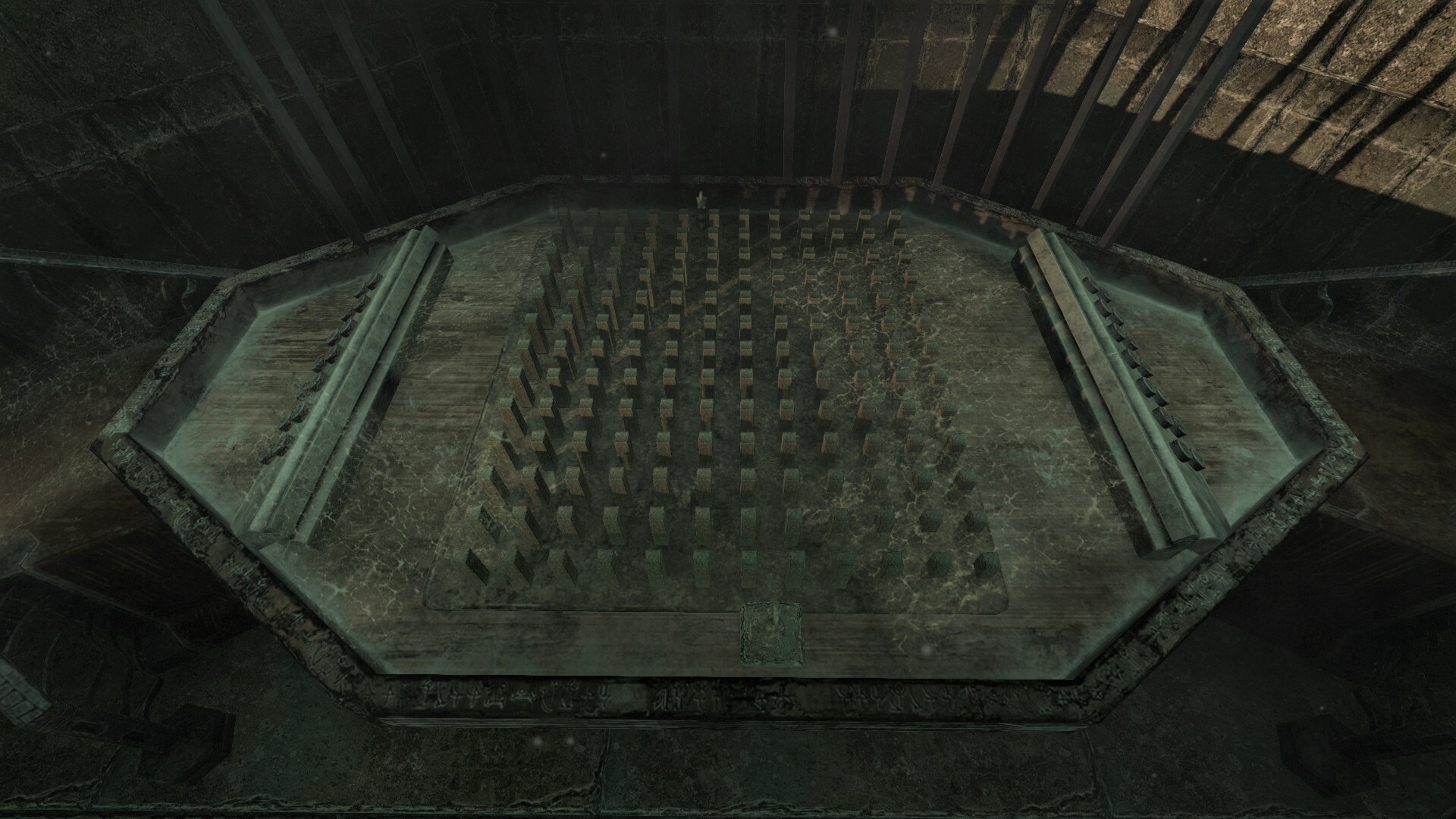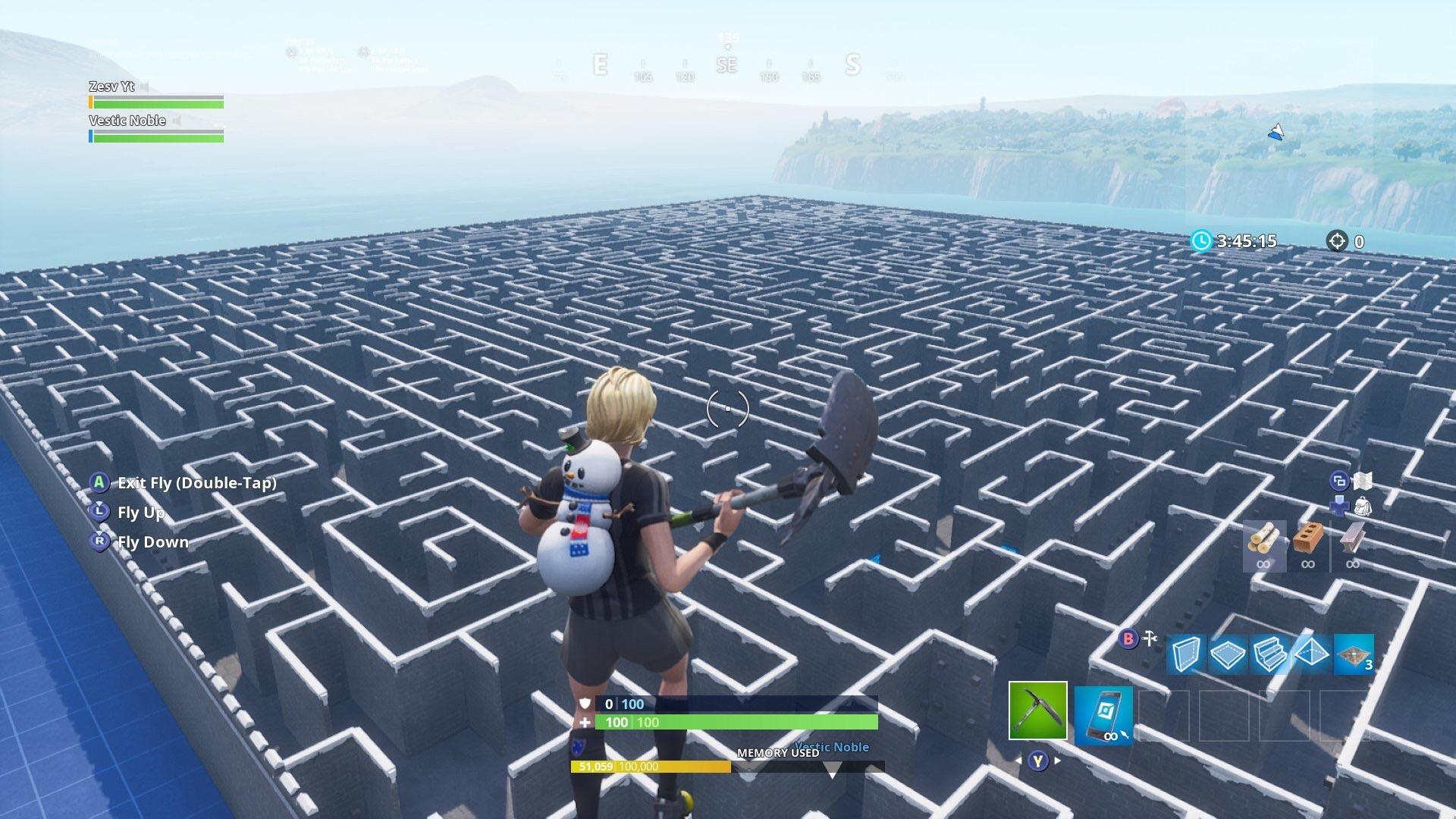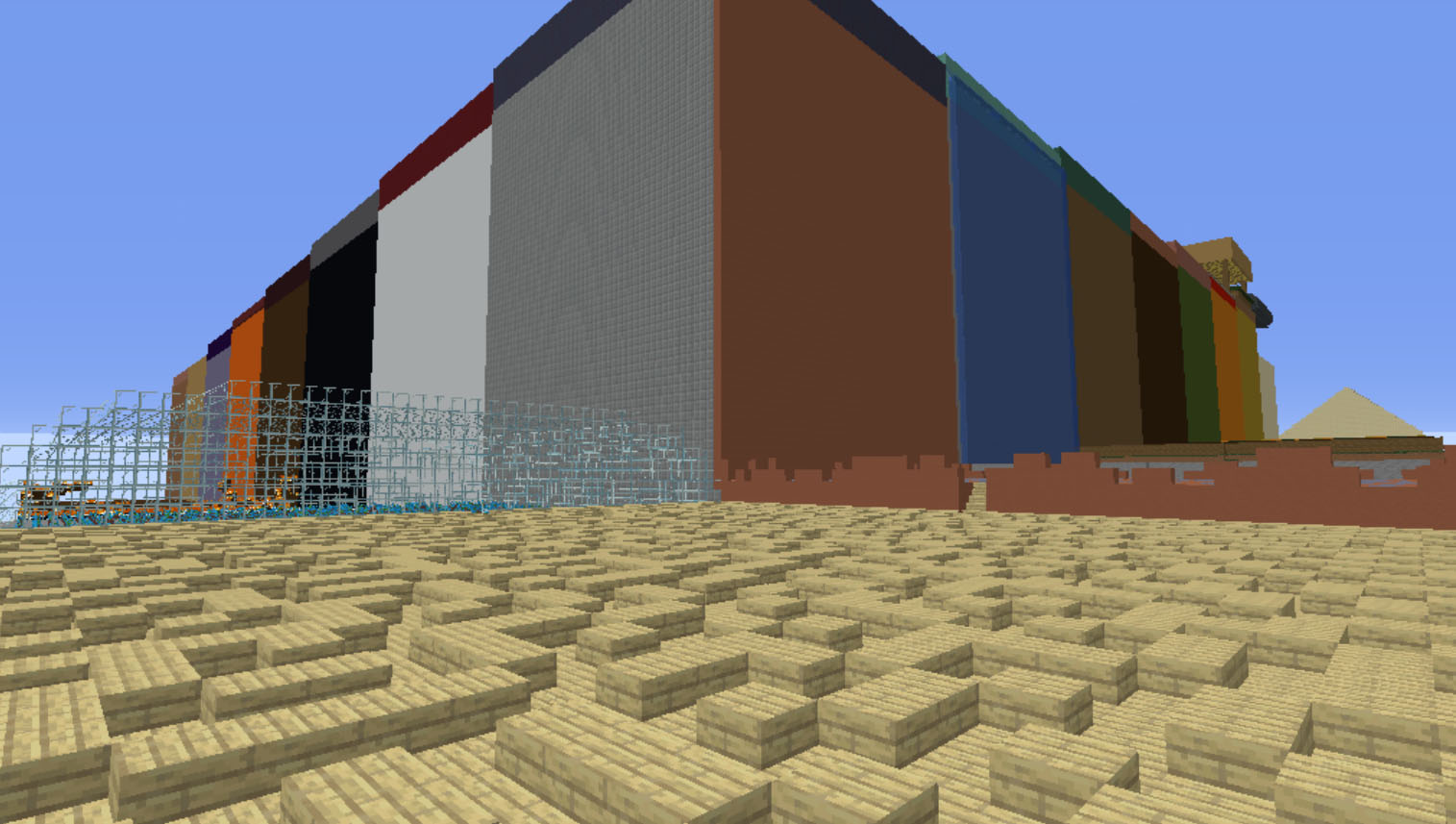Unraveling the curious history of videogame mazes and labyrinths | PC Gamer - smiththoself
Unraveling the curious chronicle of videogame mazes and labyrinths

The story of mazes and labyrinths is a maze itself. The first of all tape-recorded inner ear was authorized by the African nation king Amenemhet III thousands of years ago: unlike the Minotaur labyrinth of Greek myth, this was built to personify lived in, with banqueting halls, temples, and offices. Since then, mazes have been cut from turf, mosaicked on cathedral floors, stamped on coins, hacked into cornfields, hammer-shaped by parking tourbuses, and fashioned from hedgerows as dallying spots for English aristocrats.
Mazes and labyrinths generate a surprising range of emotions. Partly, this is because the quondam International Relations and Security Network't quite a the Lapplander as the latter. The associations of the noun 'maze' are mostly negative, referring to mystification, deceit and worldly distraction. A internal ear is a similarly disorienting structure, merely the word has acquired more positive senses over time—it can serve as a place for reverie and contemplation. Psychotherapists like Dr. Lauren Artress undergo even prescribed labyrinth-walking As a form of meditation. Integral to this distinction is the idea that while a tangle may have some paths, a labyrinth has single combined, however winding.
Feature

This article first appeared in PC Gamer magazine issue 355 in April 2021. Every month we run unshared features exploring the world of PC gambling—from behind-the-scenes previews, to incredible community stories, to fascinating interviews, and more.
Off the map
For a time, mazes and labyrinths were amidship to videogames. The primary first-person shooter was arguably Maze (1974), created by students on Imlac computers at a NASA laboratory. Piece non the first of its kind, Namco's Pac-Man spawned a wave of 2D arcade maze-Salmon P. Chase games in the 1980s. "I think a whole lot of how we understand moving done 3D spaces in videogames today comes from snarl-like experiences," notes Buddy Holly Gramazio, game designer, curator, and scriptwriter for Dicey Dungeons, who once organised a maze exhibition for London unfit fete Now Play This. "Eventide going back to the Windows 95 screensaver maze, right? A great deal of early 3D, even if it wasn't explicitly labelled a maze, is something that we would now consider tangle-like."
Mazes and labyrinths are a hot introduction to 3D movement in games, Gramazio points come out, because the premise speaks for itself. "You see them and you know what you have to DO." They can besides be a powerful "design prompt" she adds, in that they show how many an distinguishable imaginative contexts and perspectives you can minx out of an ostensibly small area.
Computer simulations provide many elaborate possibilities for maze- builders, of course: they aren't bound by everyday physical conventions. In Alexander Bruce's Anteroom, scandent a flight of stairs may forget you on the same floor. In Ian McClarty's The Catacombs of Solaris, stopping to look around morphs the corridor beforehand into a wall.
Even going hindermost to the Windows 95 screensaver tangle, right? A peck of early 3D, tied if it wasn't expressly tagged a maze, is something that we would now debate maze-like
Holly Gramazio
For all these precedents and opportunities, however, mazes and labyrinths aren't more than celebrated in games now. Maze environments are inherently artificial and arcane, and it's difficult to fit them into umpteen stories and settings. But the echt problem, perhaps, is that mazes and labyrinths aren't that amusing to navigate—at least by the standards of games that delineate 'fun' as a brisk feedback circuit between job and repay with marginal ambiguity operating theatre downtime.
"In a digital maze, you cannot dissever people's frustration at their inability to find their way impossible from their foiling with the interface and how the maze is bestowed," Gramazio explains. "When the great unwashe are stuck and can't find their way out, I think overwhelmingly the reaction is 'This is bullshit, I can't figure retired where I'm going'. It's non 'OK, this is very cagey, I need to stop and remember about the choices I've made'. Getting people to feel cozy and confident in their navigation of complex digital spaces is already quite difficult." Gramazio herself enjoys thought process virtually mazes but is to a lesser extent keen on walking them, in real world and otherwise. She came close to abandoning her first Final Fancy game, Net Fantasy Eight, thanks to a maze section where the same backdrops are used for antithetical rooms. "I was in some rather debilitate for fucking of all time. I was in a drain that was basically the same four pictures of a drain representing 40 different places they could beryllium in the drain."

Blind corners
Mazes and labyrinths might seem obnoxious in a role-playing game with random battles, just that claustrophobia makes them well-suited, naturally, to horror games. Even here, though, developers can't afford to bewilder players too much. "I think there's probably a lot of great breathing in to pull down from studying real-life mazes and labyrinths, but my guesswork is that near of it would atomic number 4 connected to aesthetics and general layout, and not and then much about level design," comments Fredrik Olsson, executive producer and yeasty lead along Resistance's Amnesia: Reincarnation. "In point of fact, most real-life mazes could act as examples of really poor level design—that's separate of their nature."
Amnesia: Rebirth contains one of gaming's more horrifying mazes. Dropped on you around the fractional mark, it's a gridiron of square pillars with paths formed by articulated metal Gates linked to pressure panels.
Amnesia: Rebirth contains one of gaming's Sir Thomas More horrible mazes. Born along you around the halfway marker, it's a control grid of square pillars with paths formed by articulated metal gates linked to pressure panels. As elsewhere in the game, you can light torches to quell your character's mounting terror, but this risks attracting attention. There's a creature in the maze with you—uncomplete-imperfect, like the Minotaur. As you explore you hear it ranting, growing more and more enraged as you near the pass away.
Thoughtful from on high, the maze isn't too demanding. Information technology's nearer to a single-course labyrinth than a snarl, and there are unseen fail-safes (which I won't spoil) to help you reach the end. Paradoxically, mazes make it easier to add so much handholds without damaging the illusion: as Olsson explains, developers can "capitalise on the confusion that naturally comes with the introduction of a maze [...] to cheat the player in a helpful and prudent manner". During Rebirth Lease's Plays, he observes, many an YouTubers Don't recognize that they're devising progress till they burst done the exit door. "[It] mightiness feel equal the design was extremely confusing and that they were right lucky. But [this is] actually a result of some insidious cheats that, at the right moment, only open a means forward for the player, without them noticing."

Problems of influence
On that point are less axiomatic reasons to comprise appalled by Renascence's maze. The pillared layout takes constricted inspiration from the Holocaust memorial in Berlin, a 19,000 square meter landscape of regularly laid concrete slabs. The association, which I didn't detect during my playthrough, risks reducing real suffering to an philosophy shor, though this exact plain relies on you educated about the game's universe. IT's also a bit of a judgement upon the unconventional monument—oft described by journalists as a maze or labyrinth—which has been criticised for portraying the dead as a mass of standardized objects, burying their names in an exhibition to a lower place the monument. It's disturbingly easy to interpret arsenic 'undefiled' architecture that can be readily transplanted into a different circumstance. Olsson's insistence that the memorial doesn't have "any actual connection" to Rebirth's events feels like-minded a will to this work of abstract. "It was inspiration strictly related to the spatial structure."
If there's no actual connection 'tween the Holocaust and Rebirth's events, themes of dehumanisation and racial extermination abound in in the game's narrative. In Amnesia's macrocos, terror is a kind of energy resource. As you'll learn if you read story artefacts in a control room precisely before the entrance, the maze was explicitly improved to maximise the dread of the unlucky wanderer before 'harvest home'. The space expressly objectifies you, in other words: it disregards your personhood and reduces you to your capacity for fear. The control elbow room likewise contains a broken maze pattern that once allowed the layout to be exchanged for optimum effect. Peering down at it helps you imagine both the frenzy of those caught inside and the indifference of those pulling the levers.

Lab technicians
IT's a far cry from the mentalities of amateur maze-builders online, many of whom come their finest work on in sandpile editors so much as Minecraft. These players try for more uplifting experiences: perplexity, yes, but also enigma, enquire, and the satisfaction of stretch the expire square. Indie designer and Sony/Kuju Entertainment gra Robert Swan has been exploring mazes since the days of MIDI Labyrinth on the Atari ST (the latter's splitscreen PVP mode allows you to spy along your hostile—when playing with his brother, Swan used cardboard to draw a blank the view). He cut his teeth Eastern Samoa a intriguer making games with Sony's Net Yaroze console at university, later gravitating to map creation in shooters like Palpitate and Counter-Strike. He too occasionally creates mazes from illustrations drawn by his partner Jodie Azhar, Teazelcat Ltd Chief executive officer and a former technical art managing director at Inventive Meeting place.
I think Minecraft e'er guides people to mazes arsenic the simple orthogonal nature and procedural scenery looks maze-like to start with.
Robert Swan
"I was an avid builder in Minecraft for many years along with my sidekic, and we made-up a maze just like everyone other on our continent," Swan says. "I think Minecraft always guides people to mazes as the simple orthogonal nature and legal proceeding scene looks maze-like to start with."
Talking to Swan reveals the diversity of approaches to maze building, some of which chime intriguingly with many mundane level-blueprint questions. There are 'weave mazes', for example, where the paths grummet low-level or over each other, which is a popular gambit in some multiplayer shooters. 'Pleach mazes' take up many paths but No dead ends. These can exist especially tough for players, Swan notes, because "mentally we ne'er 'close off' parts of the maze as solved". And then there are Recursive fractal mazes that harbour perfect smaller copies of themselves. "I think I've seen this touched on in some games simply it can quickly spiral stunned of manipulate in complexness—I haven't seen such a concept applied to a multiplayer first-individual gunslinger, but it would be a fascinating experiment!"

For Aris Martinian, a 21-yr-superannuated musician, mathematician, and author from Old Colony, the play a trick on to maze design is giving the player the sense that they're getting somewhere, yet sprawling and knotted the structure. Martinian draws a comparison with additive games so much as Cooky Clicker. "Even if the entire gage revolves some clicking a single cookie and watching numbers go awake, unlocking new things keeps the game interesting, and each buy gives the player the same expiation as solving a single sudoku puzzle. So when I build mazes, I like to provide landmarks, not clean for ease of navigation, merely also to capture that sense of progression."
Martinian has been building Minecraft maps since the two-year-old age of 13. If you have a poor sense of focus, their mazes Crataegus oxycantha sound like the ingurgitate of nightmares: highlights include the formidable Prismatic Puzzler, a seven-storey rose-colored chicken feed tower that resembles a End Wizard focus array. Simply if Martinian's mazes are mind-boggling they are also with consideration built, with bridges providing vantage points and a range of strong landmarks. Wholly are designed to teach or s measure of spatial reasoning and job-solving. "When a maze has you doing this, instead of just blindly hugging the right wall and hoping you eventually reach the exit, I consider that a of import succeeder."
Shapely to last
DeuxiemeCarlin from Pelican State is the holder (at the time of composition) of the world record book for Minecraft's largest published snarl. His magnum opus, Crooked Trails, is a stratospheric endeavour that took around a month to create and has been successfully traversed by just seven out of thousands of players—the fastest run is around seven hours. DeuxiemeCarlin has been loving by mazes since infancy, and is happy to make them out of anything. "Any material that can follow twisted to form paths, I can develop a maze through: everything from a stack of DVDs to a Discord server to Caucasian furniture!" He enjoys mazes both for the pleasure of solving them and for their exteroception intricacy. "One possibility I'm leaning towards in recent months is that it has something to do with the direction my nous works, with high- functioning autism. And WHO says it has to be one [reason], but not the others? It could be a mass of things!"
DeuxiemeCarlin considers maze- making an artform. "The same feeling people get when finish a picture, or when composing music? That's the belief I get when I produce mazes." He emphasises the importance of variety—Crooked Trails consists of 100 regions with different colour palettes and materials—and also advocates against repeating patterns or stretching out hallways for the sake of filling space. "Each region must be crafted with care, and attention to particular."

Elusive choice of words
Mazes don't have to be physical structures or representations, naturally. Some of the best are textbook-based. Itch.Io is full of Twine games that are inherently labyrinthine, composed of many ramose strands, and playing them is like fumbling some a maze with a blindfold. Sisi Jiang's Theseus seizes upon this compare, patc also embracing the intermingled feelings mazes and labyrinths draw. Therein retelling of myth, the Greek paladin Theseus and the Minotaur are unloved partners sort o than foes. Cast as Theseus, you must find your way out of a garishly painted internal ear while playing out an fanciful argumentation with your beau.
The maze embodies the parental abuse experienced by some characters (the Minotaur, aka Asterion, is the sort-of-foster boy of the king who unfree him). "It was meant to give the player burrow vision, a feeling of a loss of control, and claustrophobia," Jiang explains. "Information technology was decisive to me that a bad relationship did not solely involve the actors in the play, but the conditions under which they were meant to forge a connection."
Just the game too presents its labyrinth equally "a space for emotional geographic expedition" and "an emotionally batten place for failure". Each path corresponds to a branch of Theseus' inward wrangle with the Minotaur, displayed as floating text. 'Wrong' paths uncover the tenderness apiece reference tranquil has for the other, put together with futile efforts at reconciliation. In the process, something substantial is revealed about both earthborn beings and the things we build. "[In that respect are] no consequences for 'picking wrongly' the first time," Jiang says. "And I think that accurately reflects a dish out of our human internal processes—we have to hit tons of slain ends before reaching our verity."
Source: https://www.pcgamer.com/unravelling-the-curious-history-of-videogame-mazes-and-labyrinths/
Posted by: smiththoself.blogspot.com


0 Response to "Unraveling the curious history of videogame mazes and labyrinths | PC Gamer - smiththoself"
Post a Comment